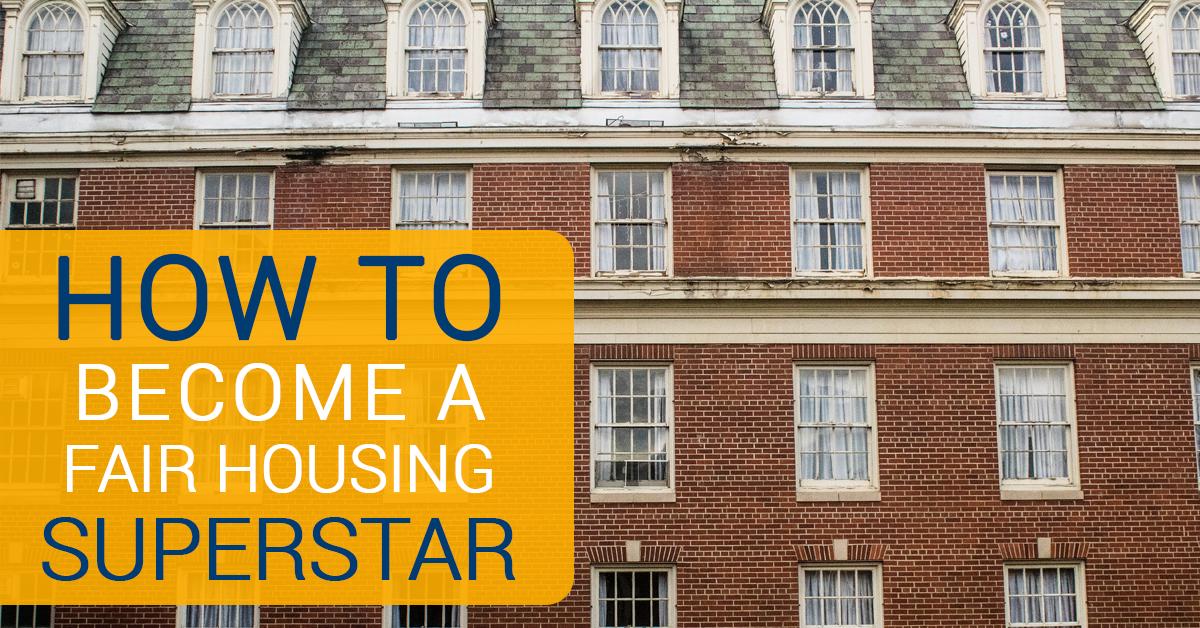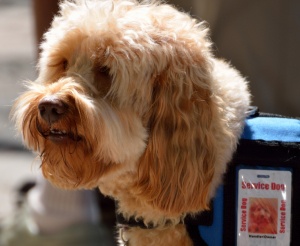4 tips for being a fair housing superstar (part 3)

April is Fair Housing Month! In honor of this occasion, I’m sharing four tips I’ve learned over the years. From “senior buildings” and reasonable accommodation to service animals and housing terminology, I’m here to get you on the path to becoming the fair housing superstar I know you are. This is a four part series, so be on the lookout for part four coming out next week!
Understand The "Critters" of Public Housing
There are three legally distinct types of animals in public housing.
Service Animals:
Service animals are dogs or miniature horses that have been trained to do something specifically related to a disability. Examples include a guide dog (or guide horse) for a client with vision impairment, a seizure alert dog, or a dog trained to bring various items (shoes, medicine, remote control) to a client with disabilities. PHAs may only ask if the dog is needed for a disability and what it has been trained to do. However, if it’s clearly obvious to the PHA (i.e. a guide dog for a client you can tell or already know to have a vision impairment) then no questions should be asked. PHAs may not ask what the disability is, how extreme it is, proof that the dog can do it, proof that it has been trained or licensed. Note that service animals are not reasonable accommodations. The same four-step process outlined above does not apply here (see the Americans With Disabilities Act for more guidance).
Assistance Animals:
assistance animals, on the other hand, are reasonable accommodations. These animals do not have to be a dog or a miniature horse, do not need to be trained to do anything specific but do need to be related to a disability. This is the category where we would find “emotional support” animals. Here’s what FHEO 2013-01 has to say:
An assistance animal is not a pet. It is an animal that works, provides assistance, or performs tasks for the benefit of a person with a disability, or provides emotional support that alleviates one or more identified symptoms or effects of a person's disability. Assistance animals perform many disability-related functions, including but not limited to, guiding individuals who are blind or have low vision, alerting individuals who are deaf or hard of hearing to sounds, providing protection or rescue assistance, pulling a wheelchair, fetching items, alerting persons to impending seizures, or providing emotional support to persons with disabilities who have a disability-related need for such support. For purposes of reasonable accommodation requests, neither the FHAct nor Section 504 requires an assistance animal to be individually trained or certified. While dogs are the most common type of assistance animal, other animals can also be assistance animals.
Neither service animals nor assistance animals are pets, and neither of them are subject to the regulatory restrictions under 24 CFR Part 960 Subpart G and Part 5 Subpart C.
Pets:
24 CFR 960 Subpart G and Part 5 Subpart C cover pet ownership in public housing. As PHAs that own public housing are landlords in their jurisdictions, HUD intends for them to follow all the state or local laws and ordinances that govern pet ownership in their area. This includes establishing pet fees, inoculation requirements, limitations on the number and size of animals per square foot of living space, etc.
From a fair housing perspective, what’s most important to remember is that service animals and assistance animals are not pets.
Next: Don’t Confuse Yourself
Want to build up your fair housing knowledge?
More about the author:

Adam Ensalaco specializes in making rent calculation easier to understand and clearing up common misconceptions about the process. Adam has previous experience in the affordable housing industry working to house people with disabilities and training housing authorities on reasonable accommodations and has been a part of the NMA team for nearly a decade.




